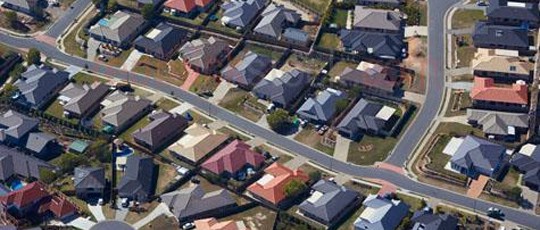Australia’s Housing Affordability Crisis
According to the 8th Demographia International Housing Affordability Survey Australia still has one of the most unaffordable housing markets in the world despite two years’ of stagnant house prices in most major markets, as shown below by RPData Daily Home Value Index over the last year.

The Demographia survey ranks the affordability of housing in the US, Canada, Britain, Australia, New Zealand, Ireland and Hong Kong by dividing the median house price with the median household gross annual income before tax. A multiple of 3.0 or less is seen as affordable, and 5.1 or over is considered severely unaffordable. The table below outlines the number of property markets in each country which fall into these affordability bands:

Figure 2
Source: Demographia International Housing Affordability Survey 2013
The survey shows Australia has no major markets in the affordable or moderately affordable markets. Sydney is the third most expensive major housing market in the world with a median multiple of 8.3, followed by Vancouver Canada with a multiple of 9.5, and most expensive Hong Kong, where the multiple is 13.5. Melbourne is ranked as the seventh most unaffordable major housing market with a multiple of 7.5.
Below we can see that affordability is actually improving in Sydney, Melbourne, Adelaide and Brisbane, from a multiple of 6.7 to 6.5 over the past year. The report states however that “each of the five major markets continues to be severely unaffordable, reflecting vastly overpriced housing.’’ Dwellings in Perth and interestingly Canberra & Hobart are becoming less affordable. This is most likely due to falling median incomes rather than an increase in property values.

Regarding Australia’s smaller urban centres the survey says, “Overall, Australia’s median multiple remained at a severely unaffordable 5.6. Among the smaller markets, the least affordable was Port Macquarie, with a Median Multiple of 8.6, followed by Coffs Harbour and the Sunshine Coast at 8.0. Outside the major metropolitan areas, the least expensive markets were Shepparton (VIC) at 4.5 and Mildura (VIC) at 4.6, both seriously unaffordable. There were no affordable or moderately unaffordable markets in Australia”. That’s bad news for first homebuyers.
So why does Australia have such unaffordable housing? In general the survey places the blame for unaffordable housing in nations such as Australia, Britain and Canada at the feet of government policy stating, “Overwhelming economic evidence indicates that urban containment policies, especially urban growth boundaries, raise the price of housing relative to income.” In specific reference to Australia “Each of Australia’s major markets, with the exception of Sydney had a multiple of 3.0 or less during the 1980s, before the widespread adoption of urban containment policies, which is referred to as “urban consolidation” in Australia (illustrated Figure 3). The survey makes the point that these urban consolidation strategies place onerous costs onto developers who then pass these costs on to consumers, making housing artificially expensive. State governments have become aware of the need to increase housing supply, in 2011 for example the NSW Liberal Government announced the creation of the Affordable housing Taskforce to help encourage fast development of land for housing for low income families and the elderly.
It appears that 2013 will not see any major changes to housing affordability in Australia as a result of an increase in housing supply. A recent national building and construction survey shows deterioration in industry conditions, despite historically low interest rates. Peter Jones (Chief Economist of the Master Builders Association of Australia) says, “Interest rate cuts over the past year appear to have failed to boost the confidence of new home buyers”.
A slight boost in affordability may come from a depressed residential property market however. Merrill Lynch economist Saul Eslake commented ”Consumers recognise it’s a good time to buy a house but they appear to be cautious on two fronts, one they’re still cautious about taking on additional debt, and secondly, they may be apprehensive … that houses could become even more affordable.”
Combine the above comments with the results of the latest survey from Westpac below, that shows actual house price movements generally match consumer expectations and it seems it will be another flat year for the Australian residential property sector.

Our view is that the housing market will in fact enjoy a decent run in the first half of 2013, however this will eventually give way to a flat market as domestic and global economic fundamentals become obvious to consumers and start driving down market sentiment.




